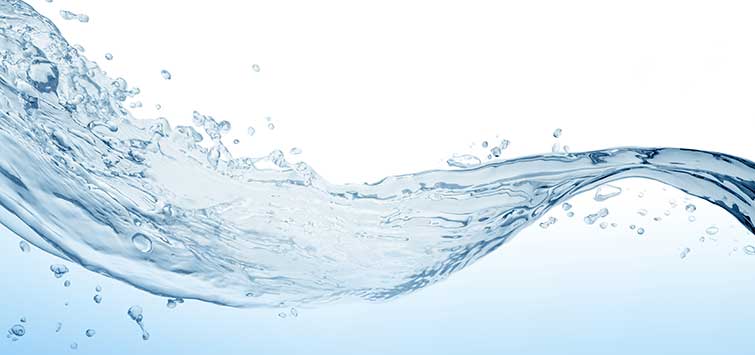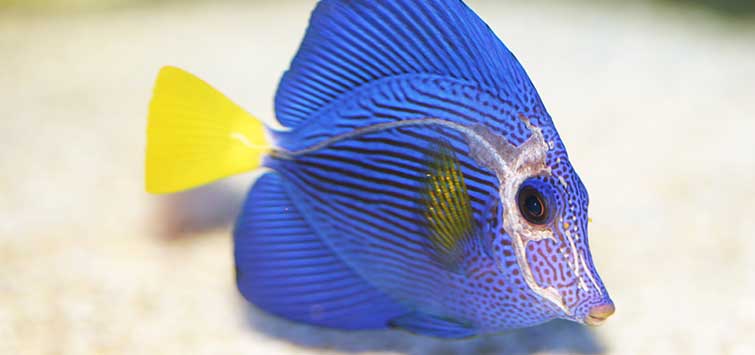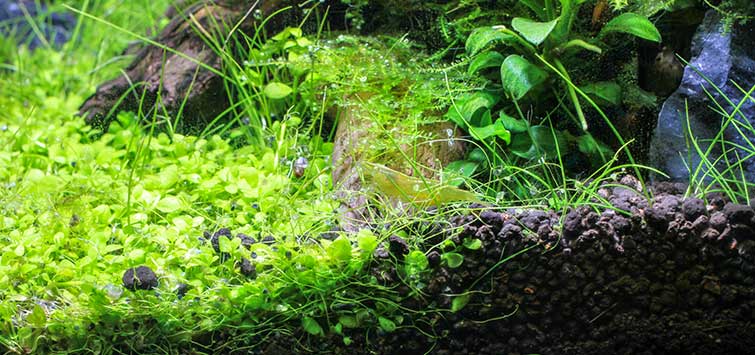Water Treatment
Types of Water Treatments
Dechloraminators
- Since municipal water supplies are treated with chlorine and/or chloramine, these substances must be neutralized before the water is added to an aquarium. It is best to use a product that neutralizes both, since water supplies are often treated with them alternately or simultaneously, and no notice is given to customers of such changes.
pH Adjusters
- You can buy simple acids and bases to lower or raise pH, but most products are buffered to a specific pH. You must realize, however, that if you wish to lower pH, and your water is highly alkaline, that is, it has a lot of buffering capacity, then the pH in your aquarium will bounce right back up again, no matter how much of the product you add.
- Keep in mind that TDS (total dissolved solids) increase with the addition of any dissolved chemicals. Thus, as you try to lower the pH of hard, basic water of high alkalinity with additions of acid products, you are actually increasing the TDS, making the water even less like natural soft, acid habitats. Fish prefer a stable pH that is not the same as their natural habitat to a pH rollercoaster as you dump in acid, watch the pH bounce back up, and then add more acid. Raising pH is much easier than lowering it.
Soluble Substrates
- Calcareous sands and gravels can be used to increase pH and buffer the water. Crushed coral will slowly dissolve in acidic conditions, neutralizing acid and increasing buffering capacity.
Rift Lake Salts
- These products are designed to bring your aquarium water to approximately the same chemistry of Lakes Victoria, Malawi, and Tanganyika. They produce a much more appropriate chemistry than aquarium salt or sea salt mixes. The salinity of those African lakes is not predominantly from sodium chloride, so salt makes a poor substitute. Many aquarists use these special salts for other species, too. For example, anyone with soft water can use these mixes to produce more suitable water for most livebearers or Central American cichlids.
Medications
- Fish medications, like any medicines, should only be used as directed. Ich medications are not intended to treat other ailments, and antibiotics for bacterial infection are not intended to treat ich. If you are unsure what problem your fish have, you should not indiscriminately medicate them; get an accurate diagnosis, then use the appropriate medication.
- In most cases, diagnosis of a fish ailment can be made only with microscopic examination of body scrapings or gill biopsies.
- Animal medications are coming under increasing governmental control to prevent their misuse, which besides harming the patients often puts the people using them at risk. Misuse can also contribute to the development of drug-resistant pathogens.
Tonics
- There are a tremendous variety of tonics, supplements, and conditioners designed to produce particular conditions in your aquarium. They are particularly popular with aquarists who strive to maintain a very specific type of aquatic environment. Many are employed by aquatic gardeners, since plant nutrient supplements that encourage plant growth without fueling algae blooms are so valuable for planted tanks. Another common use is of various blackwater tonics, which add humic acids and other organic compounds to imitate the environment of super-soft, super-acidic rainforest streams.
Marine Supplements
- In the case of marine reef aquariums, it is often necessary to add calcium and other enrichments. The reason for this is that many invertebrates, like corals, build a skeleton or shell of calcium carbonate. In the wild, of course, as these animals remove dissolved calcium from the water it is constantly replenished as the waves crash incessantly over the reef. You could imitate this by changing all the water in the aquarium one or more times per day, but very few people would choose that course of action, and leaving the water in the tank long enough for the calcium to be depleted is more typical. Thus, reef aquarists must monitor the calcium levels in their tanks and add it as necessary.
- Although it is often difficult to determine the exact requirement for trace element supplementation, many products that aim to maintain concentrations of iodine and other trace elements are widely used by reefkeepers. Again, these should not be used indiscriminately, but as part of a specific program for the maintenance of chemical stability in the aquarium water.
Reverse Osmosis (RO)
RO stands for reverse osmosis, and it refers to a technology that uses water pressure to push water through a membrane, leaving behind dissolved substances. It is possible to produce almost pure water. This removes not only minerals that harden water, but also impurities of just about every sort. There are two major uses for this technology: marine tanks and softwater setups.
- The salt used in constituting artificial seawater is manufactured to contain specific concentrations of a long list of chemicals. If the water used has all kinds of dissolved substances in it, that throws off the painstakingly derived formula. Thus, marine aquarists, especially reefkeepers, use RO water to make up the water in the first place and to top off evaporation.
- The other major use for RO water is to maintain fish from very soft water. There are habitats in which the water has almost nothing dissolved in it other than organic acids from leaf litter. Since RO water has virtually nothing dissolved in it, it is often used by aquarists trying to replicate such habitats. Often, however, even these aquarists add some buffering compounds to the RO water to protect against the plummeting pH that often manifests itself in fish tanks containing water with no buffering capacity.
- The chemistry and physics behind RO systems is fascinating, but you don’t have to understand that to benefit from the technology. What’s important is that the water pressure of your supply is utilized to produce pure water through the membrane. In some applications, a supplementary pump is used to increase efficiency and reduce waste, since the greater the pressure, the more RO water is produced for a given input volume.
How to Prevent and Manage Dying Livebearers
I am 13 years old and have kept fish for over two years now. I have a 75-gallon tank and a 10-gallon tank. The 75-gallon is a community tank, and the 10-gallon houses about 18 fry. I have been having a problem because whenever my livebearer females get pregnant, they will have the fry and then die a few hours later. I have tried many things to keep them alive but nothing works. Do you know what could be going on with these females? What can I do to keep them alive? Josh Myers (via email)
There are a couple of possibilities here. First, you may have a highly inbred strain of livebearers, whatever they are (I am presuming platies or swordtails). There are occasional females that die after birth, but it is not common. With normal strains, any high death rate like that is normally attributable to insufficient calcium in the diet or in the water.
If you have soft water, you might think of adding some of the Rift Lake salts that are designed for tanks containing cichlids form the Great Lakes of Africa. You won't need the recommended addition, but half of what is recommended could help out if your water is quite soft. Nearly all poeciliids (guppies, swordtails, platies, and mollies) prosper best in water that is at least slightly hard.
Also, be aware of the handling of the mother fish if you are transferring her to a spawning trap in the smaller tank. Are water conditions in the two tanks the same at transfer? It is important that all parameters--hardness, pH, nitrite and nitrate levels--be the same, or very close. And, of course, it is important to handle a gravid female carefully. Many breeders prefer to use media that provide hiding places for the fry rather than move the pregnant females.

.png?h=595&iar=0&w=2781&hash=5FD5E69473BCC22199FBFA2FB71B6033)



